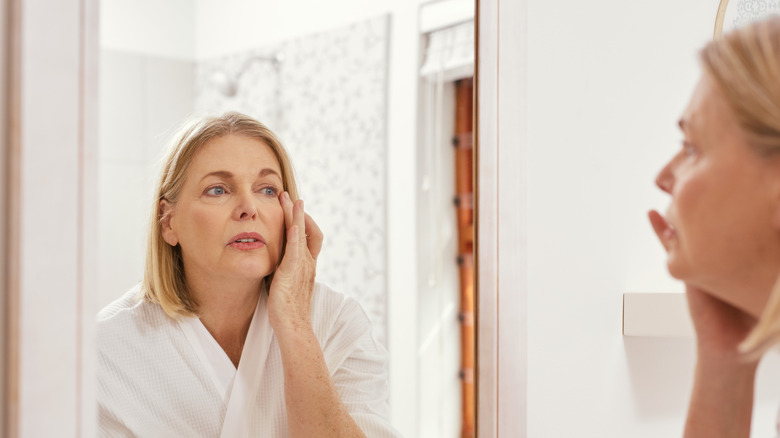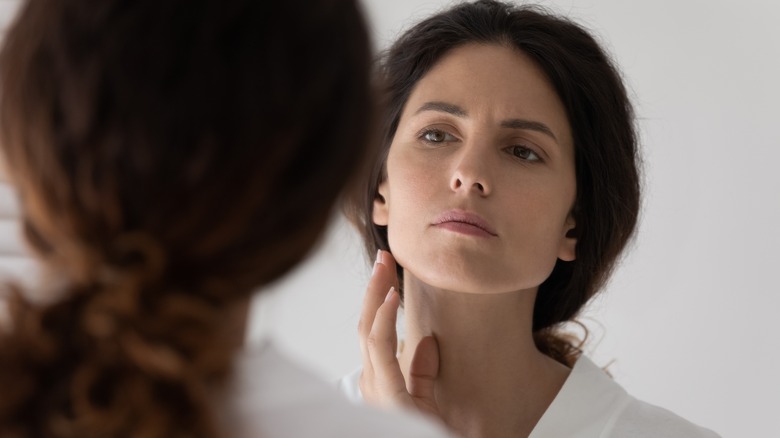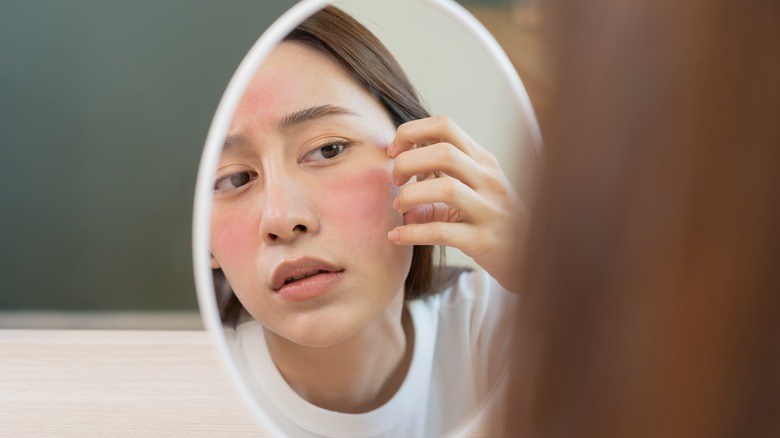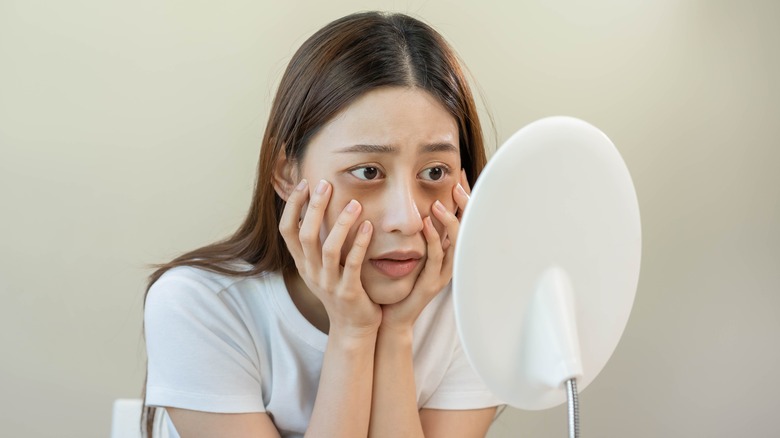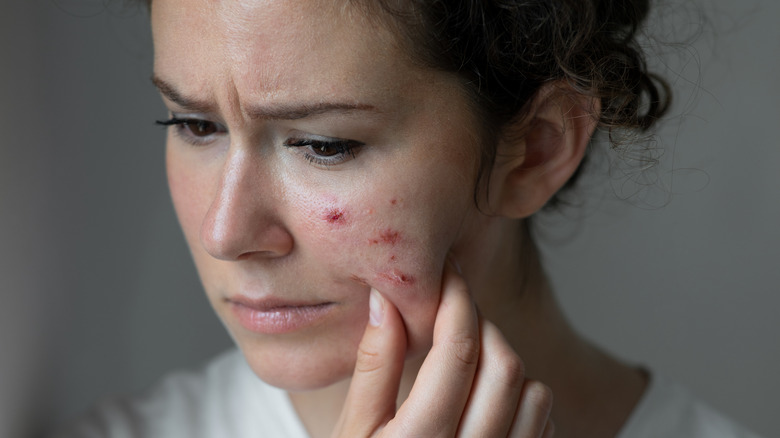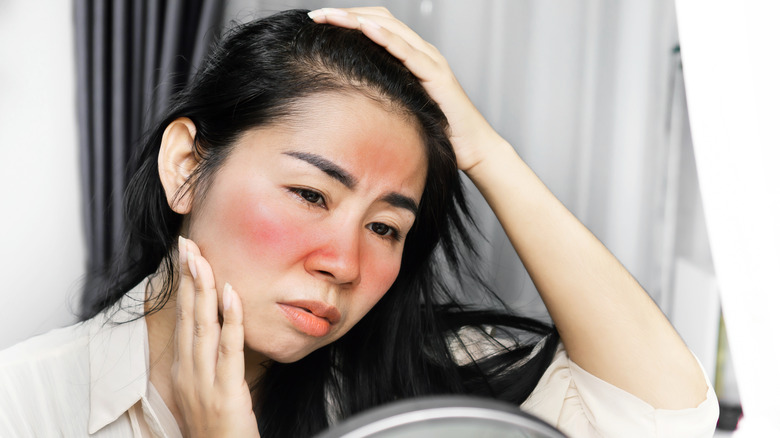6 Signs Your Skin Is Dehydrated & What To Do About It
When dealing with skin problems, it's normal for the words "dehydrated" or "dry" to pop up. While common terms, some people are still unsure how to distinguish between the two. Dehydration refers to the lack of hydration in the skin. This is caused by a lack of water or other lifestyle factors which leave your skin parched. Your environment and caffeine intake are just a couple of factors that can leave your skin dehydrated over time.
Pointing out dehydrated skin early helps resolve signs of dehydration before it's too late. To alleviate these symptoms, you'll need to practice proper lifestyle changes. If you live in a dry climate, you could increase your water intake and carry hydrating products for reapplication. Drinking water is proven to help you get healthy, glowing skin. While you don't want your skin to be overhydrated, a good balance will ensure your skin remains in top shape, no matter where you live or what lifestyle factors affect it.
Tight skin
An easy way to tell if your skin is dehydrated is to observe whether it feels tight or uncomfortable. Tight skin feels as if it's lost its elasticity and flexibility. The "pinch" test is a common examination to determine whether this feeling means your skin is truly dehydrated. Simply pinch a small piece of your skin, and notice how long it takes to return to its usual form. If it takes a long time, your skin is probably tight and lacks hydration. Tight skin will feel as if it's been stretched to its maximum and won't feel comfortable, no matter how much product you apply.
Because dehydration results from a lack of water flowing through your body, no amount of skincare products can adequately supply your skin with the right amount of hydration. While hydrating products can help improve the feel and texture of tight skin, the only real solution is to increase your water intake through liquids or foods containing high amounts of water. If your skin feels tight, you should gently exfoliate any dead skin on top. Be careful not to over-exfoliate the skin, though, as this will only aggravate and irritate it.
Increased signs of aging
With tight skin an effect of dehydration, it's no wonder that signs of aging can also indicate dehydration. Fine lines and wrinkles are two noticeable skin problems that plague dehydrated skin. Because your skin loses its elasticity and ability to bounce back, these fine lines and wrinkles appear more quickly than usual. Although it's perfectly normal for fine lines and wrinkles to appear on your face, especially as you age, dehydration can accelerate these signs of aging.
Treating fine lines and wrinkles from dehydration is as easy as attacking your skin with the right skincare ingredients. Hyaluronic acid is a wonderful ingredient to add to your skincare routine if you're noticing more lines than usual. Because dehydrated skin emphasizes these lines and wrinkles, it's easier to spot these signs when you're dehydrated. If you're already properly hydrated through foods or liquids, hyaluronic acid is the humectant that can hydrate your fine lines and wrinkles. Hydrating products are quick superficial fixes that can patch up the first layer of your skin while proper hydration catches up inside your body.
Itchy skin
Itchy skin can be a sign of various skin issues, but when seen along with other signs, it can also indicate dehydration. Since your skin lacks moisture, it's more prone to irritation from typical triggers. On the other hand, hydrated skin typically gives you a barrier that helps prevent itchiness from environmental factors. Untreated itchiness can cause scaly and patchy skin that'll become a bigger issue over time. To feel more comfortable and at ease, it's best to treat itchy skin while simultaneously treating your dehydration.
Extreme itchiness can cause harm to your skin and become bothersome over time. To relieve the itchiness, you should supplement your skin with plenty of moisturizer or lotion. A hydrating moisturizer will quench some of this dehydration and slowly get your skin back to its normal shape. The lotion will also help your body or hands if they feel itchy. In addition, you can wet your skin and immediately apply moisturizer to lock in hydration.
Dull skin
No one likes having lackluster skin, but dull skin is another sign of trouble. Dull skin can appear in various ways but typically looks flat, sagging, bumpy, or even gray. Your eyes may appear sullen, and dark circles are likely. When your skin starts getting dull without an alternative reason, it's almost a given that lack of hydration is to blame. Sagging skin, which includes fine lines and wrinkles, is a challenging side effect of dehydration to fix and, therefore, should be tackled as soon as possible.
This is because dehydration affects the regeneration of cells in your skin, making the process of growing healthy skin cells much slower. In this slower process, dead skin cells can build up on your face, blocking pores and becoming more apparent. To alleviate dull skin, you'll need to first shed the dead skin cells with light exfoliation while adding nutrients and hydration back into the skin. Hydrating serums can target the skin much deeper and are a must for refreshing your skin.
Excess oil
While seeming contradictory, dehydration can produce excess oil on your skin. When your skin lacks hydration, oil production automatically goes into overdrive to replace the lack of moisture. This can cause your skin to become both dehydrated and oily. It's important to note that oil and hydration aren't the same and that adding more oil to your skin doesn't imply increased hydration. Both are needed for balanced skin but are separate factors of healthy skin. This increased oil production comes with clogged pores, breakouts, and potentially cystic acne.
Dehydrated, oily skin appears atypical of oily skin. Although there's excess oil, you'll hardly be able to notice it due to the accompanying redness, irritation, and other dehydration signs that come with oily skin. Signs of dehydrated, oily skin also include patches of dryness and tightness that make it uncomfortable. You should tackle dehydrated, oily skin as you would typical oily skin. Exfoliation, cleansing, and moisturizing are essential steps to add to your routine to help rid excess oil, but to truly stop the overproduction of oil, you need to add hydration back into your skin by drinking more water or adding a humidifier in your room.
Sensitive skin
Perhaps the most concerning symptom of skin dehydration is increased skin sensitivity. Whether or not your skin is already sensitive, dehydration will make it more prone to irritation and redness. Since your skin lacks adequate moisture, your skin barrier is weakened and more susceptible to reactions from outside factors. Sensitive skin doesn't only apply to external factors such as pollution; it can also heighten the effects of allergies and stress. If you don't typically have sensitive skin, this can be an obvious sign your skin lacks adequate hydration.
If you have sensitive skin, begin by targeting any irritation, redness, or inflammation you see with soothing, calming products to help relax aggravated skin. Ingredients including hyaluronic acid once again can help soothe and rehydrate your skin. Other products, such as thermal water, can help add deep rehydration without exposing your skin to potential triggers. Remember to select ingredients and products containing few (if any) chemicals or fragrances, as these can irritate sensitive skin.

